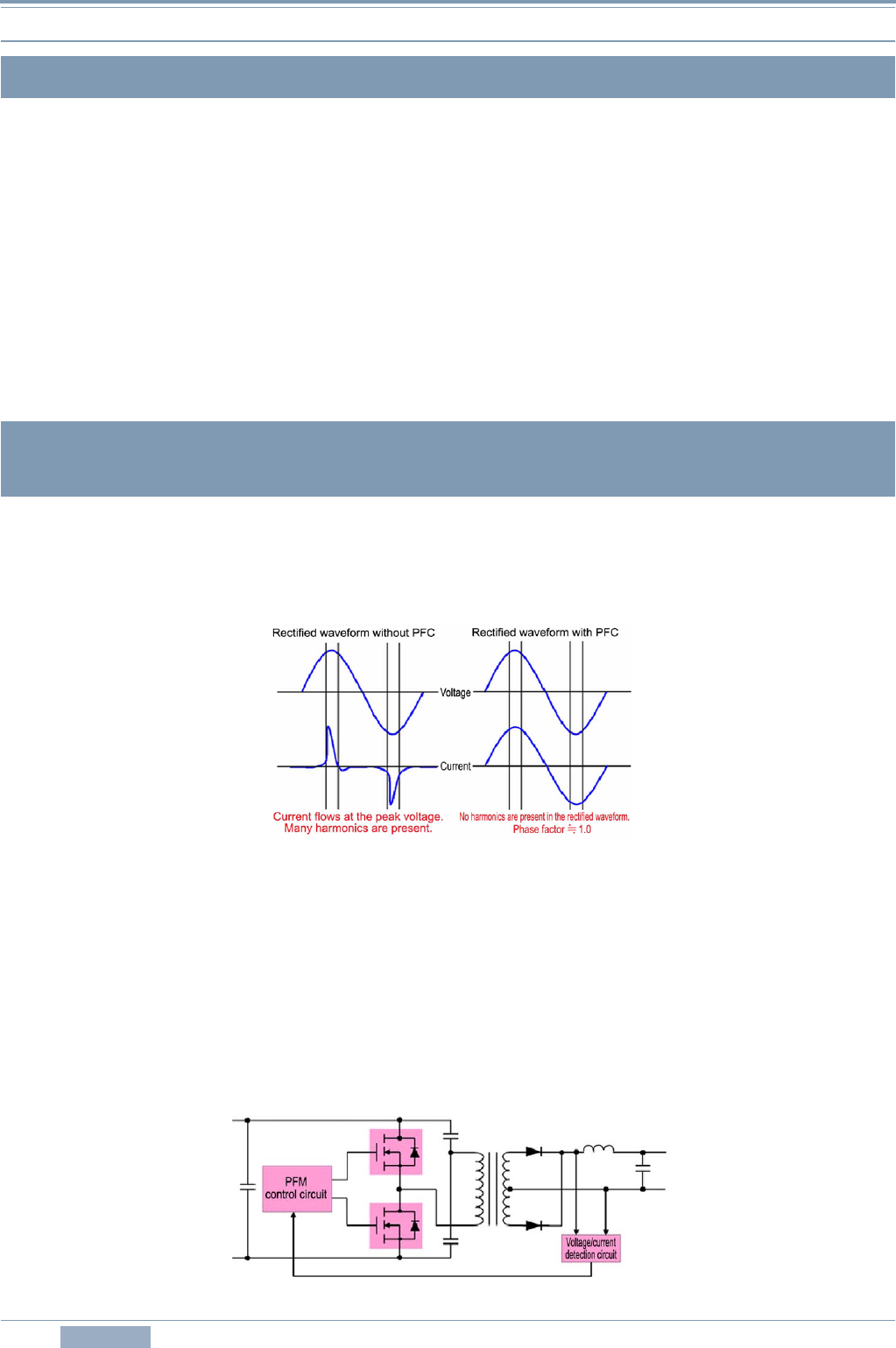
9 OPTIONAL ACCESSORY
68 CONTENTS TS-590S
Adopts a PFC Circuit that does not Produce Harmonics in an AC Rectifier Circuit
A switching power supply typically produces large harmonics in the rectifier circuit by its switching
operation which compromises the phase factor and may cause noise and other disturbances to
external devices due to the harmonics that are reflected back to the AC input side.
PS-60 incorporates a PFC-rectifier circuit that produces a rectified waveform close to a sine wave
and prevents a compromise of phase factor and disturbances caused by harmonics.
Miniaturized Size by Employing an Interleaved Switching Scheme
By turning On and Off the FET switches on the master and slave sides alternately, the burden on
each element is lessened and reliability is improved.
In the switching circuit, a full-wave current resonance type PFM control circuit is adopted to
alternately turn On and Off two FETs in a 50% duty cycle. By defining a certain period of time after
both FETs are turned Off, a soft switching operation, in which no current is made to flow at the point
of switchover, is made possible to reduce noise.
Figure 9-2 Comparing Rectification Waveforms
A high switching frequency (about 500 kHz) is chosen to enable miniaturization of the transformer for
highly-efficient DC conversion.
The DC output voltage after the conversion is monitored by the detection circuit to be compared with
the reference voltage in the PFM control circuit in order to control the switching frequency for
stabilizing the output voltage. If an overvoltage is detected, the switching of power source stops so
as to suspend the DC output.
Also, output current is monitored by the detection circuit and if an overcurrent is detected, the
switching frequency is shifted to droop the output voltage and the operation is transited to produce
intermittent output.
Figure 9-3 Circuit Diagram
9.2 Rectifier Circuit
9.3 Switching Circuit, Constant-voltage Circuit and
Protection Circuit


















